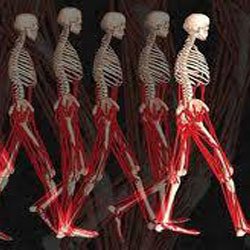Lower Limb Biomechanical Assessment
 Our Physiotherapists are trained in the assessment of lower limb biomechanics, including lumbo-pelvic control and mobility, foot position, hip range of motion, and muscle control of the hip, knee and ankle. Proprioception and balance are also essential components of assessment and rehabilitation of lower limb dysfunction.
Our Physiotherapists are trained in the assessment of lower limb biomechanics, including lumbo-pelvic control and mobility, foot position, hip range of motion, and muscle control of the hip, knee and ankle. Proprioception and balance are also essential components of assessment and rehabilitation of lower limb dysfunction.
Indications for Lower Limb Biomechanical Examination
- Overuse conditions
- Childhood growth type injuries
- Some acute ligamentous lesions
- Recalcitrant conditions, which have progressed to the chronic stage
- Postural lower limb dysfunctions
Mechanisms of injury: Predisposing factors
1. Training error: doing plyometrics too early, progressing too quickly, changing technique.
2.Equipment: inappropriate footwear (no support where they need it), new shoes (not run in – should have 2 pairs going simultaneously).
3.Environment: camber of the road (the leg running on the high side has increased pronation/internal rotation and vice versa), surface (grass vs turf vs concrete etc), the “give” of the surface, the smoothness of the surface (rate of shock absorption), the evenness of the surface (grass needs improved proprioception/coordination to run on it), adding in hills if usually runs on the flat, etc.
4.Biomechanical features: in the subjective, check the past history, for example as children did they have any lower limb problems with birth or development, any recurrent problems.
Management
Management may involve a variety of interventions, including:
- Orthotic prescription
- Stretches for the muscles
- Mobilisation of the lumbo-pelvic region
- Core stability retraining (lumbo-pelvic region)
- Increase of hip ROM
- Balancing muscle lengths and strengths of the lower limb
- Correction of training technique
- Balance retraining, proprioceptive retraining
- Liaising with the coach

